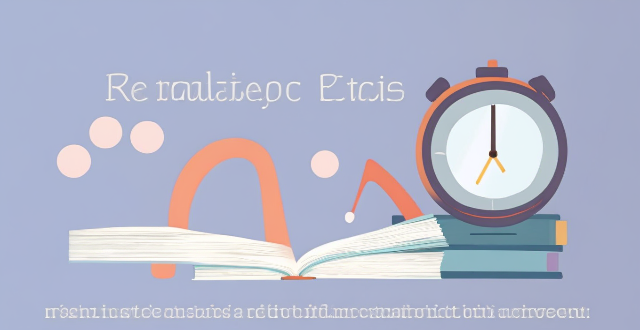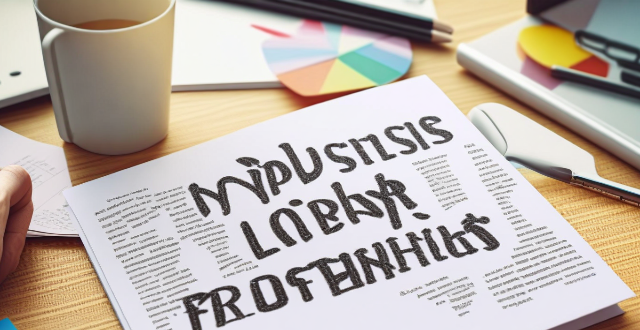Reading Chunking

What are some effective speed reading techniques ?
Effective speed reading techniques include pre-reading, chunking, reducing subvocalization, scanning, keyword spotting, pacing, and practice. Pre-reading helps focus on important information, chunking breaks down long sentences into smaller chunks, reducing subvocalization improves reading speed, scanning finds specific information quickly, keyword spotting concentrates on essential details, pacing sets a target reading speed, and practice improves skills over time.

Can you explain the concept of "chunking" in scientific memory techniques ?
Chunking is a fundamental concept in scientific memory techniques that helps individuals improve their ability to remember information. It involves grouping individual pieces of information into larger, more meaningful units or "chunks." This process makes it easier for the brain to store and retrieve information efficiently. Chunking has numerous applications across various fields, including education, psychology, and computer science. Its benefits include increased recall speed, reduced cognitive load, enhanced learning efficiency, and improved organization. Examples of chunking include phone numbers, alphabetical order, and calendar dates.

Is speed reading a natural ability or a skill that can be learned ?
Speed reading is a topic of interest for many individuals who wish to improve their reading efficiency and comprehension. The question arises whether speed reading is a natural ability that some people possess, or if it is a skill that can be learned and developed through practice and training. While there may be some individuals who possess a natural ability for speed reading, it is generally accepted that speed reading is a skill that can be learned and improved upon through practice and training. By employing specific techniques and strategies, anyone can enhance their reading speed and comprehension, ultimately increasing their productivity and knowledge acquisition.

How do speed reading techniques compare to traditional reading methods ?
Comparing Speed Reading Techniques to Traditional Reading Methods Speed reading techniques and traditional reading methods are two different approaches to consuming written information. Each has its own advantages and disadvantages, and the choice between them often depends on the reader's goals, preferences, and the nature of the material being read. Here's a detailed comparison: Speed Reading Techniques Advantages: - Efficiency: Speed reading techniques allow readers to process large amounts of text in a shorter time frame. - Time-Saving: Ideal for individuals with limited time who need to skim through extensive documents quickly. - Skill Development: Practicing speed reading can enhance cognitive abilities such as focus and concentration. - Flexibility: Some techniques can be adjusted to suit the complexity of the text and the reader's purpose. Disadvantages: - Comprehension: High-speed reading may compromise deep understanding and retention of the material. - Limited Applicability: Not suitable for all types of reading materials, especially complex or dense texts that require slow, thoughtful reading. - Fatigue: Rapid reading can lead to eye strain and reduced comprehension over time. - Learning Curve: Mastering speed reading techniques requires practice and may not come naturally to everyone. Traditional Reading Methods Advantages: - Comprehension: Traditional reading tends to promote better understanding and memory retention of the content. - Enjoyment: Many readers find pleasure in the act of reading at a comfortable pace, engaging more fully with the text. - No Learning Curve: Most people are familiar with traditional reading methods, eliminating the need for additional learning or adjustment. - Suitable for All Texts: Traditional reading is appropriate for any type of text, from novels to academic papers. Disadvantages: - Slower Pace: Traditional reading is generally slower than speed reading, which may not be ideal for those with tight schedules. - Less Efficiency: In scenarios where rapid information gathering is needed, traditional reading might fall short. - Potential for Skipping Details: Without specific strategies, readers might miss important details or nuances in the text. Choosing the Right Method When deciding between speed reading techniques and traditional reading methods, consider the following factors: - Purpose of Reading: Are you reading for pleasure, learning, or just to get the gist of something? - Nature of the Text: Is the material complex, requiring careful analysis, or is it light reading that can be skimmed? - Personal Preference: Do you enjoy taking your time with texts, or do you prefer to move through them quickly? - Environment: Are you in a situation where speed reading would be beneficial due to time constraints or other external factors?

How does speed reading affect comprehension ?
Speed reading is a technique used to read text faster while maintaining or improving comprehension. However, the impact of speed reading on comprehension can vary depending on several factors such as the individual's reading skills, the difficulty level of the material, and the method used for speed reading. In this article, we will explore how speed reading affects comprehension and provide some tips to improve both speed and understanding.

Can speed reading help me save time when studying for exams ?
Speed reading can save time when studying for exams by increasing efficiency, improving recall, managing time better, and reducing stress. However, it may compromise comprehension, not be suitable for all text types, require skill development time, and lead to overconfidence. To effectively use speed reading, start early, combine techniques, take breaks, test comprehension, and customize your approach.

What are some successful methods for teaching reading to children with special education needs ?
Successful methods for teaching reading to children with special education needs include multisensory instruction, individualized instruction, structured literacy approaches, differentiated instruction, technology-enhanced learning, collaboration with parents and caregivers, and inclusive classroom practices. These strategies aim to provide tailored, engaging, and supportive environments that cater to the unique needs of each child, promoting their reading development and overall educational success.

How do I teach reading comprehension to young children ?
Teaching reading comprehension to young children is essential for their educational development. Here are strategies for making this process engaging and effective: 1. Start with short, simple texts like picture books, nursery rhymes, or short stories that are age-appropriate and interesting. 2. Make reading interactive by asking questions before, during, and after reading to encourage critical thinking. 3. Encourage vocabulary building by highlighting unfamiliar words and discussing their meanings. 4. Incorporate writing activities such as story maps, character sketches, and sequencing to reinforce comprehension skills. 5. Make learning fun by using games, drama, and music related to the text. Adapt your approach based on the child's interests and abilities to ensure maximum engagement and success.

How can I improve my speed reading skills ?
Speed reading is a valuable skill that can help you save time and increase your productivity. Here are some tips on how to improve your speed reading skills: 1. Set a goal for yourself, such as the number of words per minute you want to read or the number of books you want to finish in a month. This will help you stay motivated and focused on improving your speed reading skills. 2. Eliminate distractions by finding a quiet place to read and turning off your phone and any unnecessary tabs on your computer. 3. Use a pointer, such as a pen or your finger, to keep track of where you are in the text and prevent your eyes from wandering back over the words. 4. Practice skimming by quickly scanning through the text to get an overall idea of what it's about. Look for keywords, headings, subheadings, and other important information that can give you an overview of the content. 5. Improve your vocabulary by learning new words regularly, either by reading challenging materials or using vocabulary-building apps and websites. 6. Read regularly, even if it's just for a few minutes each day. The more you read, the faster you'll become at recognizing words and comprehending the material. 7. Take breaks while reading to avoid eye strain and fatigue. Every 20-30 minutes, look away from the screen or book and focus on something else for a few minutes before returning to your reading. 8. Use technology, such as apps and software, to help you improve your speed reading skills. These tools often include features like word highlighting, pacing controls, and comprehension tests. By following these tips and practicing regularly, you should see a significant improvement in your speed reading skills over time. Remember to be patient with yourself and enjoy the process of learning!

How can I improve my reading comprehension skills ?
Improving reading comprehension skills requires a consistent effort and the use of various strategies. Here are some key points to help you enhance your ability to understand written texts: 1. Read Regularly - Establish a routine, varying genres and authors. 2. Active Reading - Annotate by highlighting or making notes. - Ask questions before and during reading. 3. Summarize and Paraphrase - Write summaries of sections in your own words. - Create mental images like diagrams or stories. 4. Discuss and Apply - Join book clubs or study groups for discussions. - Apply what you read to real-life situations. 5. Utilize Tools and Resources - Use dictionaries, thesauruses, and research background information. - Access online courses and interactive tools. By integrating these strategies into your daily routine, you can improve your reading comprehension skills over time.

How long does it take to master speed reading ?
Speed reading is a skill that can significantly improve your productivity and efficiency in absorbing information. However, mastering this technique requires time, practice, and dedication. In this article, we will explore the factors that influence the time it takes to master speed reading and provide some tips on how to achieve your goals. Personal learning style, previous reading habits, dedication and practice, and quality of training materials are all factors that influence the time it takes to master speed reading. Tips for mastering speed reading include setting realistic goals, practicing consistently, using visualization techniques, eliminating distractions, and tracking your progress. By understanding these factors and implementing these tips, you can become a proficient speed reader in no time!

What are some tips for improving reading comprehension skills ?
The text provides tips for improving reading comprehension skills, which include active reading strategies like previewing the text, annotating and taking notes, asking questions, and summarizing. It also emphasizes the importance of building vocabulary through looking up unfamiliar words, using flashcards, and reading widely. Practice is highlighted as a crucial factor in improving comprehension, with suggestions to read regularly, challenge oneself, and join a book club. Understanding the context is another key aspect, achieved by paying attention to details, researching background information, and considering the author's purpose. Consistent practice is emphasized as essential for progress.

Are there any apps or software that can help me learn speed reading ?
There are several apps and software available to help improve speed reading skills. These include Spreeder CX, Outread, ReadSpeeder, Sorcery!, and Velocity. Each tool has unique features such as word-by-word display, sequential word highlighting, rapid serial visual presentation, memory training exercises, and practice exercises. Choose one that suits your needs and preferences, and start practicing regularly to see improvements in reading speed and comprehension.

What role does vocabulary play in reading comprehension ?
The article discusses the crucial role of vocabulary in reading comprehension. It highlights how a robust vocabulary enhances understanding, improves fluency, promotes critical thinking, and increases empathy. The article also provides tips for improving vocabulary, such as reading widely, using flashcards or apps, looking up unfamiliar words, and practicing using new words. By following these tips, readers can expand their vocabulary and become more effective in comprehending texts.

How does reading comprehension relate to critical thinking skills ?
The text discusses the relationship between reading comprehension and critical thinking skills, stating that they are closely intertwined. It explains that good reading comprehension skills enable individuals to understand and interpret written text, which in turn supports critical thinking by enhancing vocabulary, promoting inference and interpretation, encouraging evaluative thinking, and fostering open-mindedness. The text concludes that improving reading comprehension abilities strengthens critical thinking skills, enabling individuals to navigate complex challenges with greater insight and effectiveness.

How can I improve my reading comprehension in a foreign language ?
Improving Reading Comprehension in a Foreign Language Reading comprehension is crucial for learning a foreign language. Here are some tips to enhance your skills: 1. Start with Short Texts: Begin with news articles, blog posts, or children's books to understand simple language and clear structure. 2. Use Dictionaries and Translation Tools: Look up unknown words and phrases, but don’t rely too heavily on them. 3. Practice Active Reading: Engage with the text by asking questions, making connections, and summarizing key points. 4. Read Aloud and Listen to Audiobooks: Improve pronunciation, fluency, and comprehension while enjoying stories. 5. Join a Book Club or Language Exchange Group: Discuss the text, ask questions, and receive feedback from native speakers or other learners. Consistent practice of these strategies will help improve your reading comprehension in a foreign language.

How can technology be used to enhance reading comprehension ?
Technology has revolutionized the way we learn and acquire knowledge. It has also transformed the way we read and comprehend written materials. In this article, we will explore how technology can be used to enhance reading comprehension. Interactive textbooks are digital versions of traditional textbooks that allow students to interact with the content in a more engaging way. They include multimedia elements such as videos, animations, and interactive quizzes that help students understand complex concepts better. Interactive textbooks also provide immediate feedback, allowing students to identify their strengths and weaknesses and adjust their learning accordingly. Audiobooks and e-readers are becoming increasingly popular among readers of all ages. They offer several advantages over traditional paper books, including portability, accessibility, and customization options. Audiobooks are particularly useful for improving listening skills and building vocabulary, while e-readers allow users to highlight important passages, take notes, and look up unfamiliar words easily. Online learning platforms such as Coursera, Khan Academy, and Udemy offer a wide range of courses on various subjects, including reading comprehension. These platforms provide interactive lessons, practice exercises, and assessments that help students develop their reading skills at their own pace. They also offer social learning opportunities through discussion forums and peer reviews. Gamification is the use of game design elements in non-game contexts to enhance user engagement and motivation. In the context of reading comprehension, gamification can involve turning reading assignments into games or challenges that require students to apply what they have learned in a fun and rewarding way. For example, a teacher might create a treasure hunt where students must find hidden clues within a text or solve puzzles based on the content they have read. Personalized learning involves tailoring instruction to meet the individual needs and preferences of each student. Technology can facilitate personalized learning by providing customized recommendations based on students' performance data and learning styles. For example, an adaptive learning system might recommend additional resources or activities for students who struggle with certain concepts or skills.

What are the best ways to assess reading comprehension levels ?
Assessing reading comprehension levels is crucial in identifying strengths, weaknesses, and areas for improvement. Various methods include oral reading assessment, retelling or paraphrasing, written response questions, multiple-choice questions, and cloze tests. These techniques evaluate fluency, accuracy, understanding of main idea, details, and structure, factual recall, higher-level thinking skills, quick decision-making, context clue usage, grammar rules, vocabulary knowledge, and overall reading comprehension skills. By using a variety of assessment methods, educators can gain a comprehensive understanding of students' reading abilities and tailor instruction accordingly.

Can reading about sports help improve one's own athletic performance ?
Reading about sports can enhance athletic performance by providing insights into techniques, strategies, and mental approaches. It helps in technique improvement, mental preparation, and injury prevention. To apply this knowledge, set clear goals, choose relevant resources, practice what you learn, and seek feedback for adjustments.

Is it possible to read a book in one day using speed reading techniques ?
Speed reading is a technique that allows you to read faster than your normal reading speed. While it can be helpful for quickly reviewing material or getting an overview of a topic, it may not be suitable for all types of books. The pros and cons of speed reading are discussed, as well as tips for effectively using this technique. Ultimately, the decision to use speed reading should be based on personal preferences and goals, as well as the type of book being read.

Can speed reading be applied to all types of texts, including technical and academic materials ?
Speed reading can be applied to all types of texts, including technical and academic materials, but it is important to consider the challenges associated with these types of texts. While speed reading offers time-saving and comprehension improvement advantages, technical and academic materials often contain complex terminology and concepts that require careful consideration and analysis. To effectively apply speed reading to these materials, individuals can employ pre-reading strategies such as previewing and setting objectives, during reading strategies like skimming and scanning, and post-reading strategies including reviewing and summarizing. By using these strategies, readers can maximize the benefits of speed reading while still achieving a deep level of comprehension.

Are there any proven scientific strategies for enhancing memory recall ?
Memory recall is the ability to retrieve information from our memory. It is an essential aspect of learning and can be improved through various scientific strategies. Here are some proven methods for enhancing memory recall: 1. **Active Learning**: Engaging with the material you want to remember, such as reading aloud, taking notes, or teaching others. 2. **Mnemonic Devices**: Techniques that help you remember information by associating it with something easier to remember, like acronyms, visual imagery, or rhymes. 3. **Spaced Repetition**: A learning technique that involves reviewing information at increasing intervals over time, using tools like flashcards or online tools. 4. **Elaborative Interrogation**: Asking yourself "why" questions about the material you are trying to remember to deepen your understanding and retention. 5. **Chunking**: Grouping related pieces of information together into larger, more manageable chunks to reduce cognitive load and make it easier to remember complex information. 6. **Sleep and Rest**: Getting enough sleep and taking breaks while studying can improve memory recall by allowing the brain to consolidate memories and prevent burnout. By incorporating these techniques into your study routine, you can improve your ability to retain and retrieve information from your memory.

How do celebrity book clubs promote literacy ?
Celebrity book clubs promote literacy by increasing awareness of reading, providing access to diverse literature, creating a community around reading, encouraging personal growth through reading, and supporting local bookstores and libraries.

What are the benefits of joining a celebrity book club ?
Joining a celebrity book club offers exclusive content, guided reading experiences, community connections, personal growth opportunities, and inspiration. It enriches the reading experience and fosters empathy, critical thinking, and communication skills.

What are some effective scientific memorization techniques ?
Effective Scientific Memorization Techniques Memorizing scientific information can be a challenging task, but with the right techniques, it can become much easier. Here are some effective scientific memorization techniques that you can use to improve your memory and recall: 1. Visualization: Create mental images of the concepts you are trying to remember to make them more memorable and easier to recall. 2. Mnemonic Devices: Use tools like acronyms or rhymes to associate information with something else that is easier to remember. 3. Repetition and Practice: Repeat information over and over again to strengthen your memory and improve your ability to recall it later on. 4. Chunking: Break down large amounts of information into smaller, more manageable chunks to make it easier to remember and recall complex concepts or data sets.

How does background knowledge impact reading comprehension ?
Background knowledge significantly impacts reading comprehension by aiding in schema creation, vocabulary recognition, contextual understanding, inferencing, and increasing engagement with the material.

What are the benefits of having strong reading comprehension abilities ?
Strong reading comprehension abilities can provide numerous benefits such as improved communication skills, enhanced learning capabilities, better problem-solving abilities, and increased employment opportunities.

What are some effective study techniques for college students ?
**Effective Study Techniques for College Students:** College students can improve their academic performance by adopting effective study techniques. These include creating a study schedule, finding a suitable study environment, using active learning strategies, breaking information into chunks, practicing retrieval and review, staying organized, collaborating with peers, maintaining a healthy lifestyle, and seeking help when needed. Consistency, minimizing distractions, engaging with the material, chunking information, quizzing oneself, spaced repetition, utilizing note-taking systems and digital tools, participating in study groups, getting enough sleep and exercise, and leveraging academic support services are all crucial elements of successful studying. It's important to experiment and find out which methods work best for individual needs.

What are the challenges faced by students with poor reading comprehension skills ?
Students with poor reading comprehension skills face numerous challenges in various aspects of their lives, including academic difficulties, lower academic achievement, social and emotional issues, limited career opportunities, and lifelong learning obstacles. These challenges can significantly impact their overall well-being and future prospects, making it crucial for educators, parents, and policymakers to address this issue proactively.

Are there any apps or tools that can help me track my progress in understanding different texts ?
The text discusses various apps and tools that can help users track their progress in understanding different texts, including Reading Comprehension Apps like Quizlet and Khan Academy; Productivity Tools for Text Comprehension such as Evernote and Trello; Online Tools for Text Analysis like SparkNotes and CliffsNotes; and Personalized Learning Platforms like Adaptive Learning Systems. These resources provide features such as flashcards, video tutorials, annotations, note-taking, project boards, database views, plot summaries, character analysis, chapter-by-chapter breakdowns, close reading, personalized pathways, real-time feedback, and reading logs to aid comprehension and monitor progress.